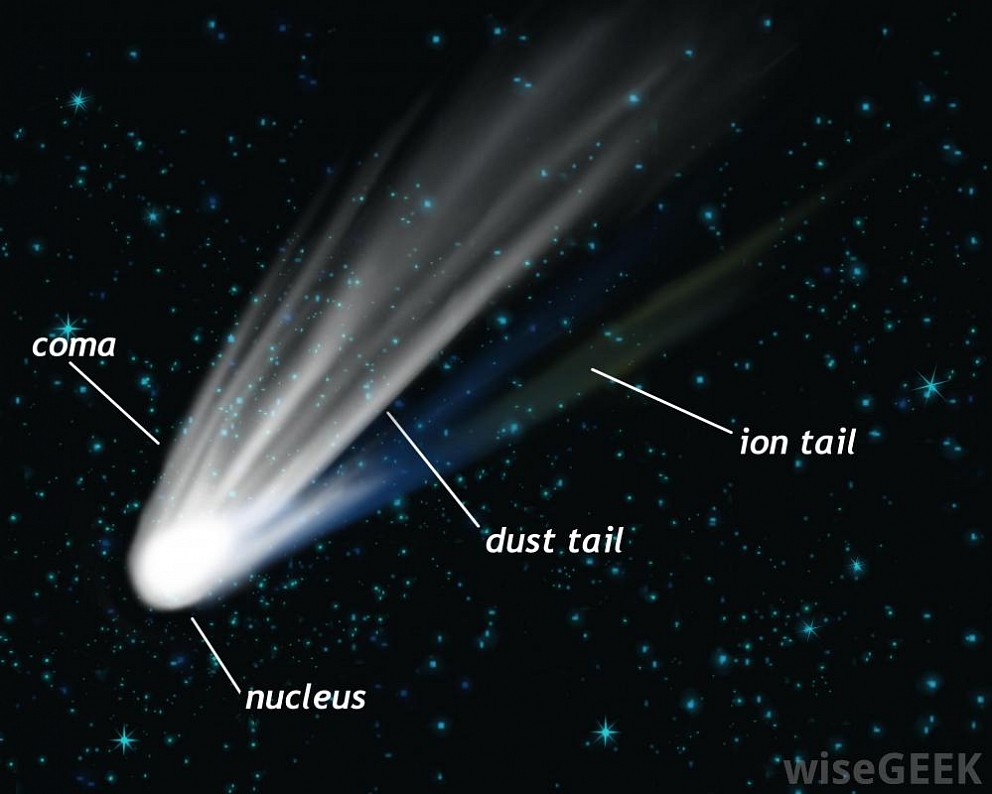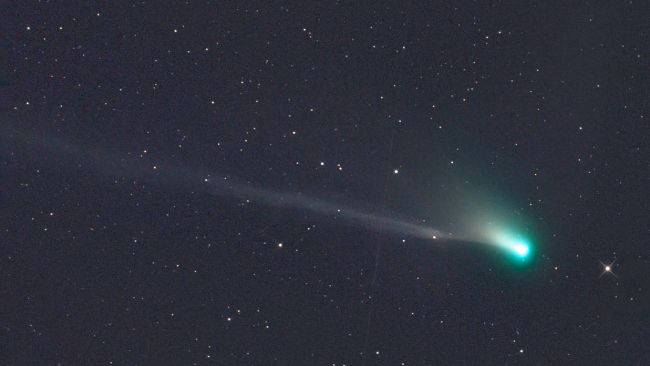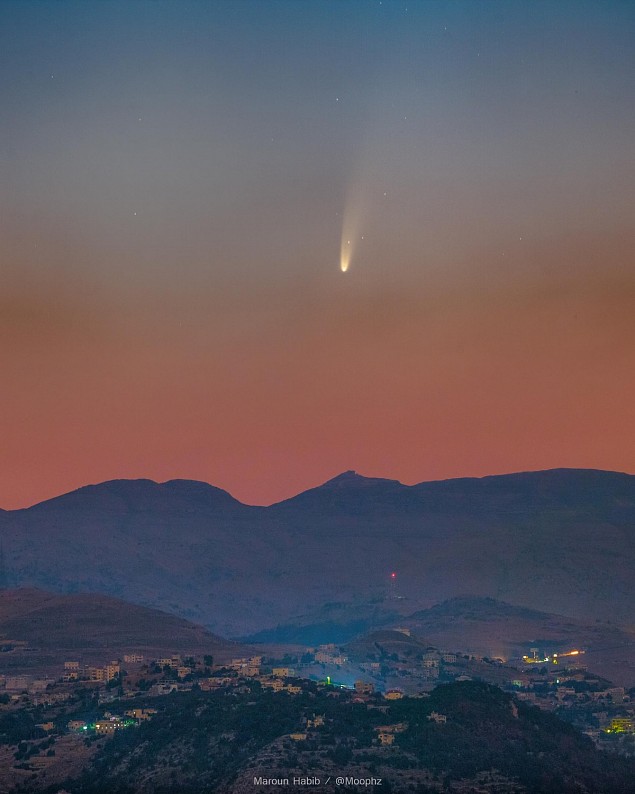It's comet time!
Ria Mohan 09 Jul 2020
A comet is an ice-ball that orbits our sun. They are primarily made of frozen gases, dust and rock. When a comet comes near to the sun, the frozen parts of the comet start to turn into gas. The gas shapes a cloud around the nucleus. That is known as a coma. The coma is often filled with hydrogen. Dew to radiation from the sun, the dust particles of the comet start charging, causing it to spread over 10 million km. Comets can undertake two tails as they move closer to the sun; in a straight gas tail; or a curved one. The tail is made by the solar wind, pushing gas away from the comet’s coma and pointing straight back from the sun. Comet tails cause meteor showers when the Earth passes through them. NASA estimates that there are 6.619 known comets. Comets originate from the Kuiper Belt, and the Oort Cloud. The Oort Cloud are mostly for long-period comets, they are the ones who take more than 200 years to orbit the sun. The Kuiper Belt is for short period comets the ones that take less than 200 years to orbit our sun. It is a disk shape region located approximately 30 to 100 AU from the sun, past the region of Neptune. The belt contains many icy objects which can from into comets. The Oort Cloud is located far from Pluto’s orbit. Research implies that the cloud contains a trillion comets. Nevertheless the Oort Cloud is so far away we can't be sure of its existence.

So what's the difference between a comet and an asteroid? Asteroids are made out of rock and metal, comets are made out of ice, rock and dust. Both were formed during the earliest history of the solar system. However, asteroids formed much closer to Sun, it was too warm for ices too remain frozen.
Recent discoveries
On March 25, 2020 a new comet was discovered by the Solar Wind Anisotropies camera aboard the Solar Observer Helicopter. On May 27 the comet came to perihelion 64 million km from the sun. It was brightening steadily until it fractured into multiple pieces. It was officially classified C/2020 F8, but nicknamed the comet „Swan”. On March 22, 2020 the comet Atlas that was discovered on December 28, 2019 started to disintegrate. The comet is continuing to fade and it will soon not be visible to the naked eye.

Comet C/2020 F8 SWAN
Everyone who was looking forward to seeing comet SWAN is wondering about what actually happened to it. The comet was easily spotted in the images because it was releasing big amounts of water, about 1.3 metric tons. This is a fast rate compared to other comets. However, the more material ejected from it, the more sunlight it can reflect and the more visible it becomes. In May it was faintly visible to the naked eye in the northern and southern skies. Comets are fragile objects, They mostly tend to break apart as they approach the sun.
In late April it suffered its fate breaking into 30 fragments. On May 27 it will enter its danger zone, because that is when it is the closest to the sun and when the solar heating is at maximum.
Scientists are not sure what the behaviors of comets are when they are this close to the sun. They remain hopeful that comet Swan will stay bright enough to see as it continues its journey.
Comet C/2019 Y4 ATLAS
The original name of the comet is C/2019 Y4. However, astronomers nicknamed the comet after the machine they used ATLAS (Asteroid Terrestrial-impact Last Alert System) in Hawaii.
The Hubble Space Telescope took images of comet ATLAS breaking into 30 fragments on 20th April and 25 on 23rd of April. It became more visible in mid-March, some astronomers anticipated it would be visible to the naked eye in May. It would have been one of the most spectacular comets ever seen in the last two decades. Further less, the comet was starting to get fainter, scientists guessed that the cold core possibly could be fragmenting or disintegrating. That is exactly what happened. On April 11th, ATLAS’s fragmentation was confirmed by amateur astronomer Jose de Queiroz, who took photos of several pieces of the comet. Hubble’s images give us more proof that comet fragmentation is possibly common and might be the forceful way by which the icy nuclei of comets die. Hubble’s crisp images may yield new clues to the breakup. The telescope has distinguished pieces as small as the size of a house. Before the fragmentation, the nucleus may have been no more than the length of 180 meters. The comet was about 146 million km from Earth when the latest Hubble observations were taken. If any of it survives, the comet will make its closest approach to Earth on May 23 at a distance of about 116 million km, and eight days later it will skirt past the sun at 40 million km.


Comet C/2020 F3 NEOWISE
A newly-discovered comet known as C/2020 NEOWISE is nearing its closest approach to Earth over the next week and visible to the naked eye, but you’ll have to get up early.
The comet was discovered by NASA space telescope NEOWISE in March 2020, moving 326 miles above the Earth’s surface. It passed closest to the sun on July 3rd and seemed to survive the encounter with our hot star and can now be seen in the early morning sky.
Click here to locate comet NEOWISE in the sky from your location.
Cover photo by Emmanuel Paoly (Astronomy Picture of the Day 9 July 2020)